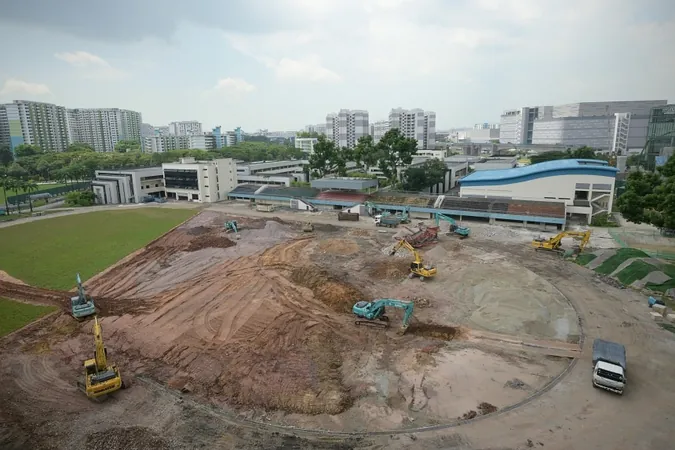
Three Junior Colleges Set to Go High-Rise as New Campuses Unveil in 2028
2024-11-03
Author: John Tan
SINGAPORE –
In an innovative shift in educational infrastructure, three more junior colleges (JCs) in Singapore are preparing to embrace vertical learning environments. Temasek Junior College (TJC), Anderson Serangoon Junior College (ASRJC), and Jurong Pioneer Junior College (JPJC) will open their new high-rise campuses in January 2028, joining Eunoia Junior College (EJC), which has already adopted this modern design.
The upcoming campuses will feature buildings reaching up to 12 stories high, optimizing space despite occupying smaller land footprints compared to their current locations. This architecture shift aligns with Singapore's ongoing urban development goals, utilizing high-rise designs to maximize land use amid the island’s limited space.
The Ministry of Education (MOE) initiated this transformative change as part of the Junior College Rejuvenation Programme, with aspirations to breath new life into older campuses. As per their vision, even with the reduced land areas, the new constructions will offer a greater total floor space to accommodate academic and extracurricular activities.
For instance, the new TJC campus located at 22 Bedok South Road will cover approximately 4.5 hectares and provide around 50,900 square meters of gross floor area. This is a significant enhancement over its current, soon-to-be-demolished location, which spans 8.4 hectares but only offers 33,300 square meters of floor space.
Planners anticipate that these campuses will not only include essential teaching facilities but also common features like track and field areas, which are integral to Singapore’s education system. The new campus designs are being fashioned by DP Architects and will include a blend of teaching and sporting facilities within their multi-storey framework.
However, as Singaporean education moves towards high-rise campuses, experts like Dr. Woo Jun Jie from the Lee Kuan Yew School of Public Policy have raised important considerations. Dr. Woo emphasized the necessity of ensuring adequate outdoor spaces and access to natural light and airflow in these vertical schools. In light of the reduced size of the campus sites, he proposed that land reclaimed could be repurposed into parks or green areas, providing a recreational balance for students and the surrounding community.
Student experiences have already offered early insights into the high-rise learning environment. Liu Yang, a former EJC student, noted some practical challenges, including potential delays due to elevator waits. Yet, he added that it felt familiar, akin to navigating life in other tall buildings common in Singapore, such as HDB blocks or shopping centers.
As Singapore embraces this new architectural approach to education, other cities facing similar space constraints are also looking towards high-rise schools. The transformation of TJC, ASRJC, and JPJC not only represents a modernization of educational facilities but also reflects broader trends in urban planning geared towards sustainability and efficient land use. These campuses will likely become a new hallmark for future generations of students in Singapore, marrying convenience with a progressive learning environment.
Stay tuned for more updates on these exciting developments as they unfold in the next few years!




 Brasil (PT)
Brasil (PT)
 Canada (EN)
Canada (EN)
 Chile (ES)
Chile (ES)
 España (ES)
España (ES)
 France (FR)
France (FR)
 Hong Kong (EN)
Hong Kong (EN)
 Italia (IT)
Italia (IT)
 日本 (JA)
日本 (JA)
 Magyarország (HU)
Magyarország (HU)
 Norge (NO)
Norge (NO)
 Polska (PL)
Polska (PL)
 Schweiz (DE)
Schweiz (DE)
 Singapore (EN)
Singapore (EN)
 Sverige (SV)
Sverige (SV)
 Suomi (FI)
Suomi (FI)
 Türkiye (TR)
Türkiye (TR)